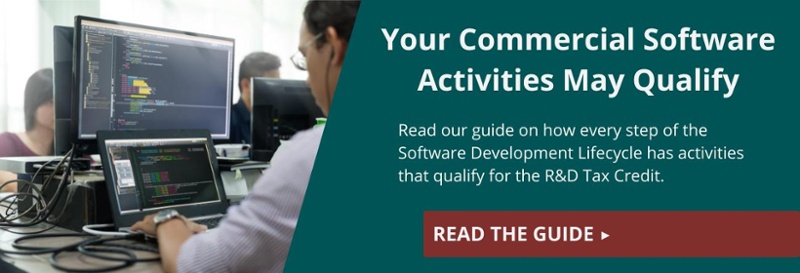
It should come as no surprise that software and technology companies can take advantage of the R&D Tax Credit when conducting system design activities. After all, that work is almost always associated with research and development.
So, if your company is developing new software, it makes sense to consider applying for the R&D Tax Credit, which was designed as an incentive to encourage companies to innovate.
Identifying R&D in Systems Design
Software design occurs during one or more phases of the Software Development Life Cycle, (SDLC). However, you'll find activities that qualify for the R&D Tax Credit in each phase of the SDLC. This blog takes a closer look at Phase Three, the systems design phase.
In this phase, detailed business needs are determined for the proposed software system. This generally includes the necessary specs, features, and operations that will satisfy its functional requirements. Considerations include the essential hardware and/or software components, hosting infrastructure, networking capabilities, security, processing, and procedures that will allow the system to meet its objectives.
The systems design phase often involves incorporating deliverables from the requirements and analysis phases into a detailed design with enough specificity so the developers can write the code. Here are some qualifying activities involved in the phase:
- Developing logical and physical designs.
- Producing meta-data, data dictionaries and data flow charts.
- Evaluating and deciding on programming languages, databases, hosting environments and security infrastructure.
Types of system design expenses that qualify for the tax credit include:
- A portion of employee wages for those involved in qualified R&D activities.
- The cost of materials and supplies used for R&D activities.
- The cost of third-party contractors who perform qualified software design R&D activities.
Passing the Four-Part Test to Qualify
Remember that in order to qualify for the R&D Tax Credit, the systems design work must pass the software industry's Four-Part Test:
- Permitted Purpose. This is the activity intended to make or improve either a product or process that results in improved function, performance, reliability, quality or cost efficiency.
- Technical Uncertainty. This is the activity intended to eliminate technical uncertainty when developing or improving a product or process related to methodology, design, techniques, formulas or inventions.
- Process of Experimentation. This is the activity that includes a process of experimentation to eliminate or resolve technical uncertainty. During the process, various alternatives and approaches are evaluated by modeling, simulation, trial and error, prototyping and other methods.
- Technological in Nature. The process of experimentation must rely on the hard sciences (engineering, physics, biology, chemistry, computer science).
The R&D Tax Credit was created to encourage innovation by providing an opportunity to reduce your tax liability and reinvest your savings back into the business to become more competitive, grow faster, and increase profitability. Consult with an R&D tax credit expert to understand how you might qualify.





